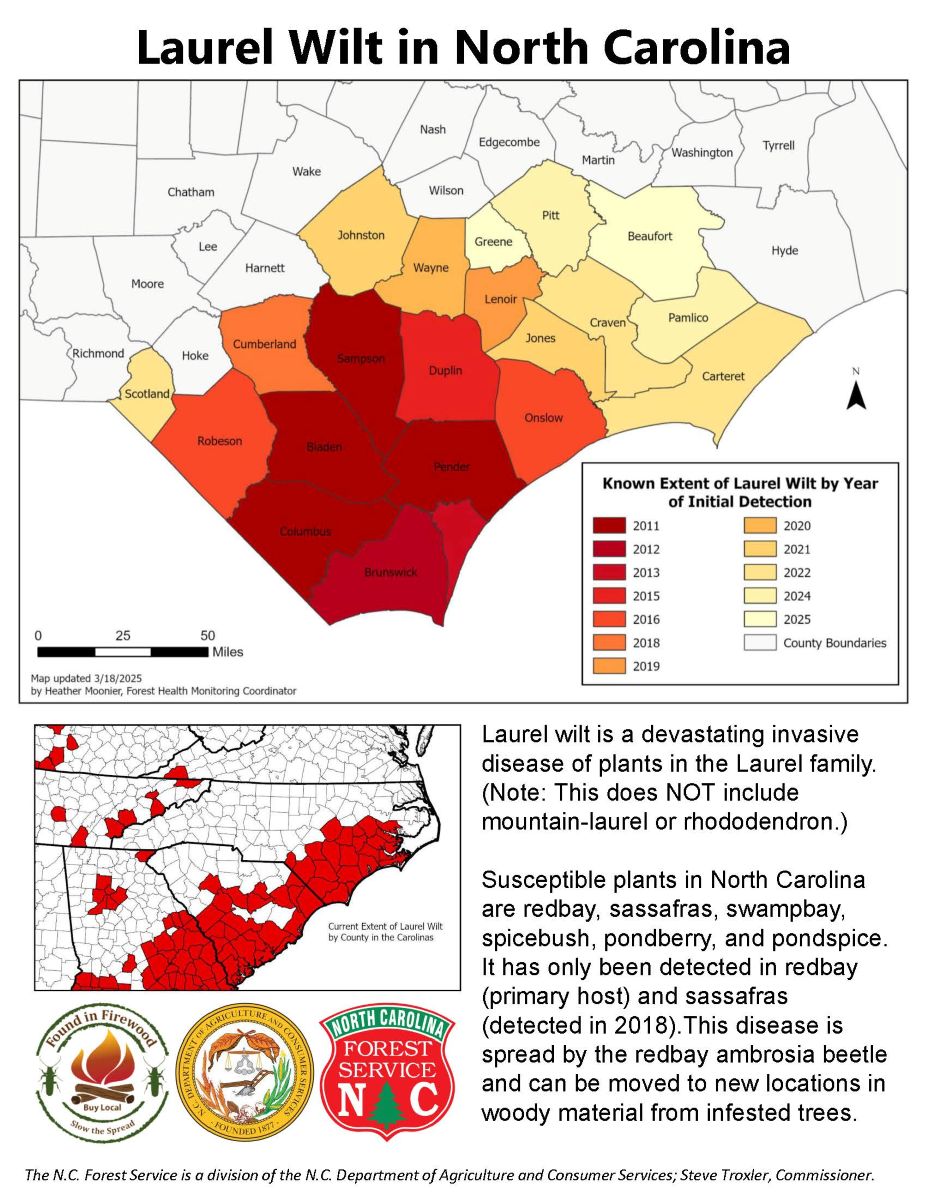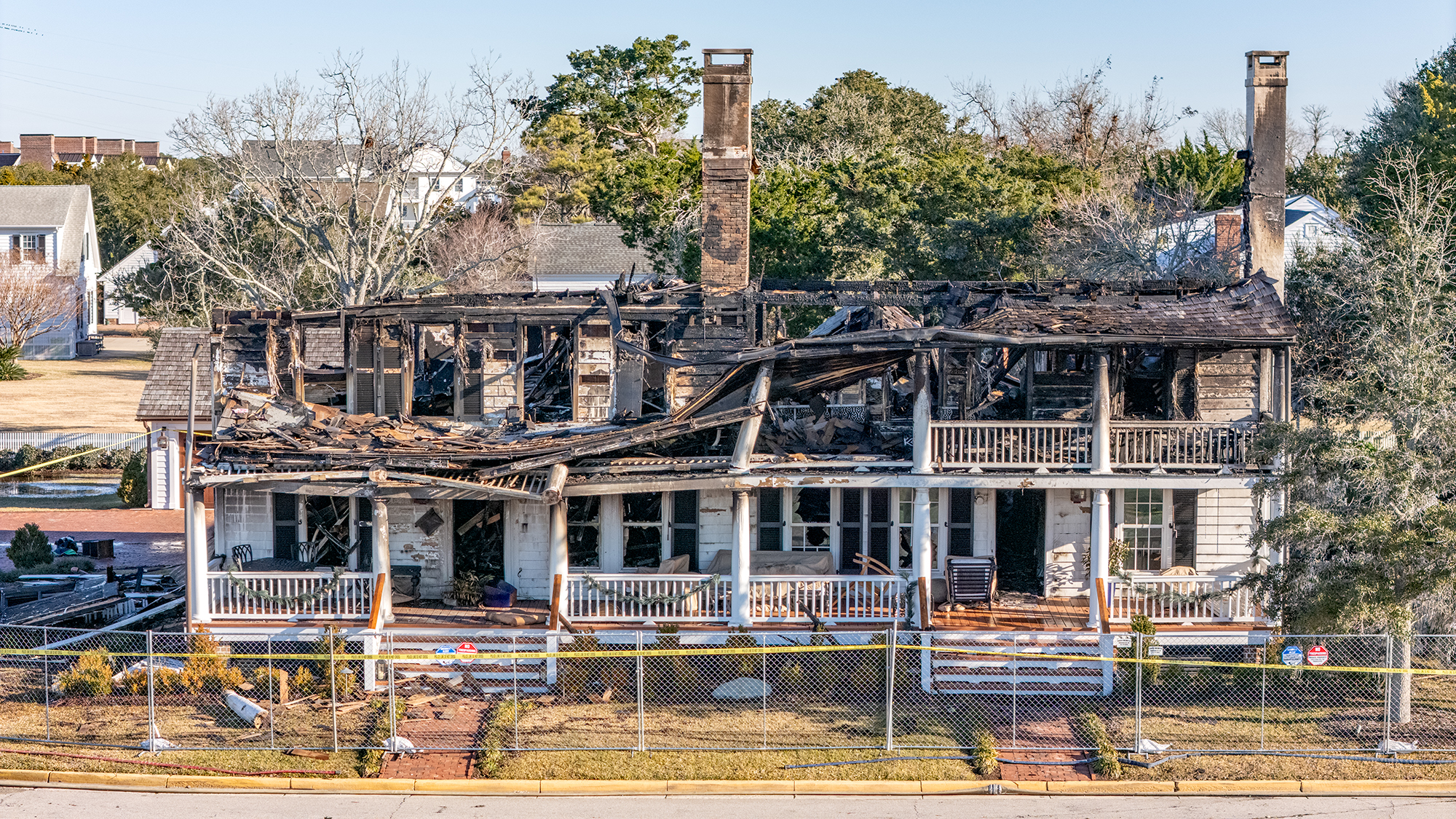
The North Carolina Forest Service has confirmed that laurel wilt, a tree-killing disease, has been detected in two more counties.
Forest officials announced this week that the disease that devastates plants in the laurel family was found on private property in Beaufort and Greene counties, and confirmed by N.C. State University’s Plant Disease and Insect Clinic pathologists.
Supporter Spotlight
The total number of counties where the tree-killing disease has been detected is now 21. In addition to Beaufort and Greene counties, laurel wilt has been found in Bladen, Brunswick, Carteret, Columbus, Craven, Cumberland, Duplin, Johnston, Jones, Lenoir, New Hanover, Onslow, Pamlico, Pender, Pitt, Robeson, Sampson, Scotland and Wayne.
“This winter, we surveyed more than 1,700 miles across 11 counties, spanning more than 43,000 acres, looking for signs of laurel wilt,” Forest Health Specialist Jim Moeller said in a release. “We detected the destructive disease in western Greene County, coming out of Wayne County, and in Beaufort County along the Bay City Highway near the Pamlico County line. So, we’ll be keeping an eye on its progression.”
The invasive redbay ambrosia beetle infects the trees with the fungus that causes laurel wilt disease. The beetle was first detected in the U.S. in 2004 near Savannah, Georgia, and has since spread to 12 states, from Texas to Virginia. Redbay ambrosia beetles are known to cover short distances flying tree to tree but humans aid in spreading the pest over long distances when transported in firewood.
Plants in the laurel family, including sassafras, redbay, swampbay, pondberry, pondspice and spicebush, can be affected by this disease.
Symptoms include drooping reddish-purple foliage. Evidence of a redbay ambrosia beetle attack may be found in the main stem. Often threads of chewed wood, called frass toothpicks, can be seen sticking out of entry holes. Removal of tree bark reveals black streaking in the outer wood. The tree typically dies within weeks or months of infection.
Supporter Spotlight
The forest service said that right now, there is not a reliable method of treating laurel wilt and insecticides have been ineffective at stopping beetle attacks. Fungicides can be used to prevent infection by the fungus, but the best defense continues to be slowing the spread by using local or treated firewood and by notifying the local Forest Service county ranger if laurel wilt is suspected.
Homeowners with dead redbay trees are encouraged to keep cut trees on their property. Dead trees should not be moved to a landfill or off-site. Proper disposal of redbay trees includes leaving wood on-site, cutting or chipping wood on-site, or burning wood on-site in compliance with local and state ordinances. Obtain a burn permit at any authorized permitting agent or online.
The service’s Forest Health Branch monitors the spread of invasive pests. People who suspect there is an infected tree in an area near them should contact their county ranger. Contact information can be found online.








